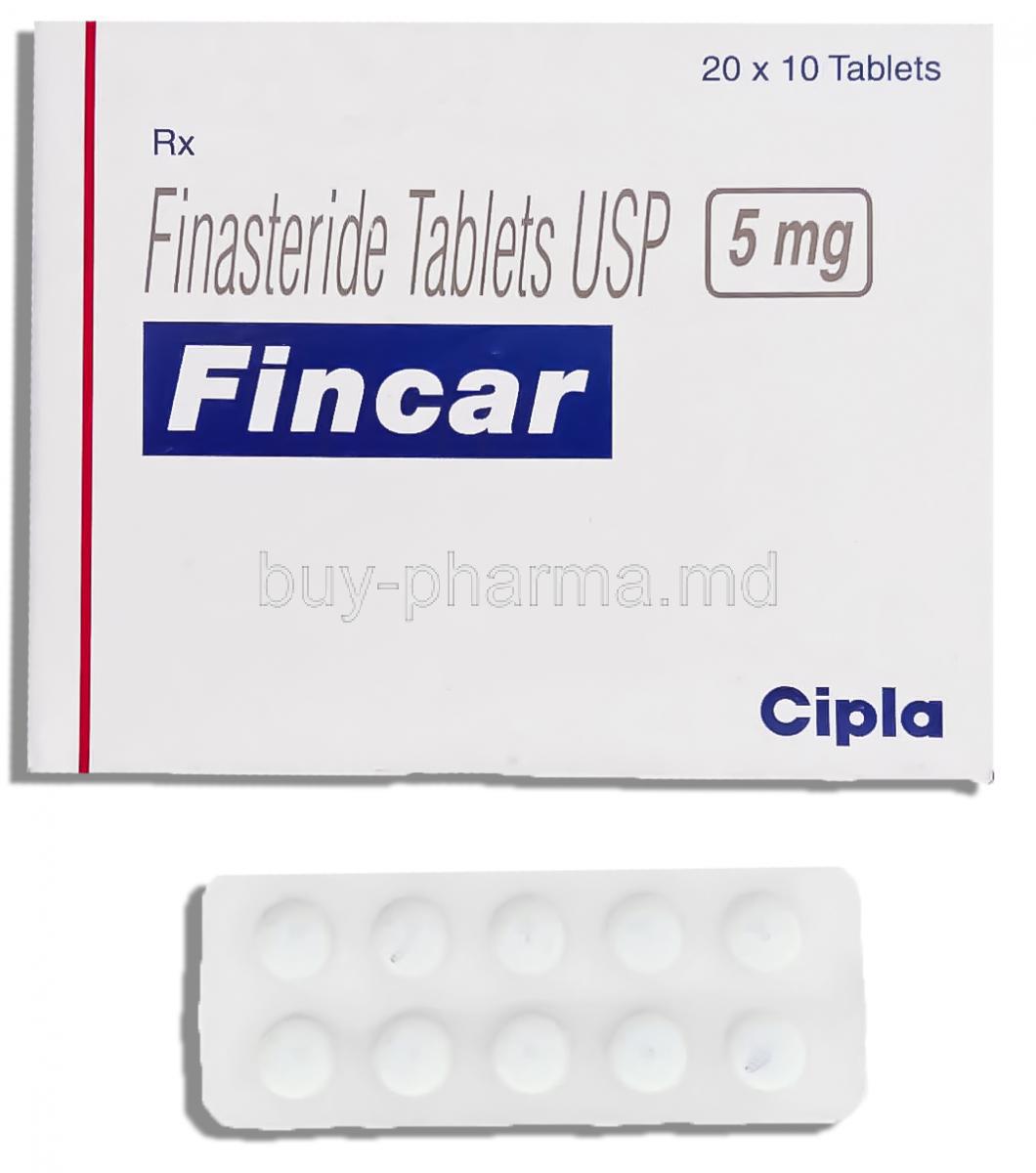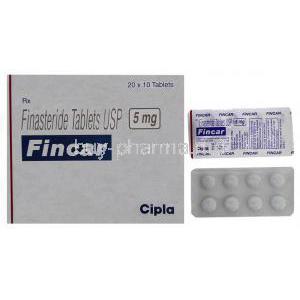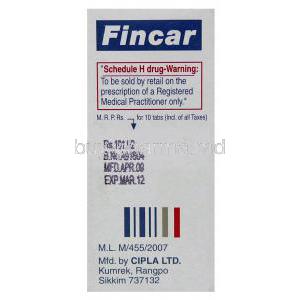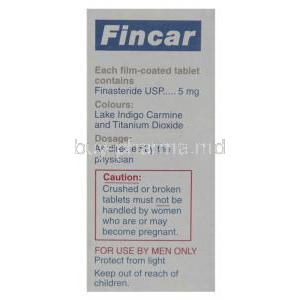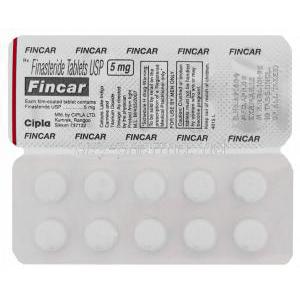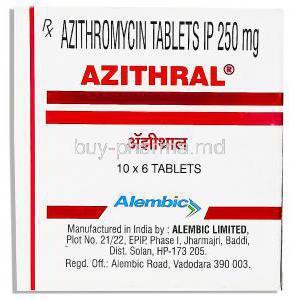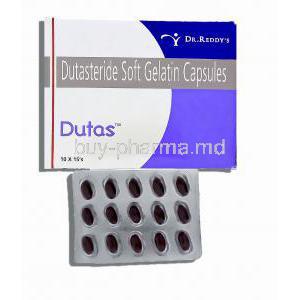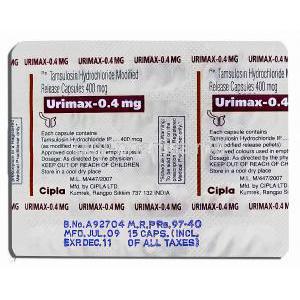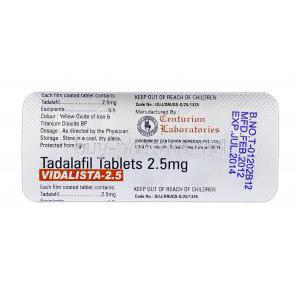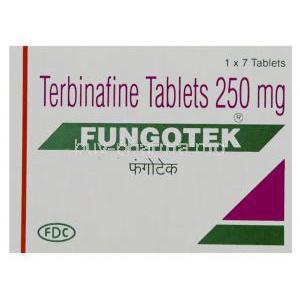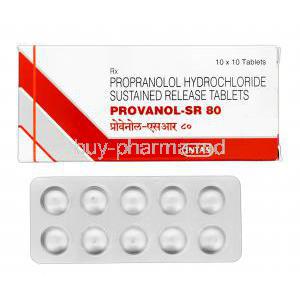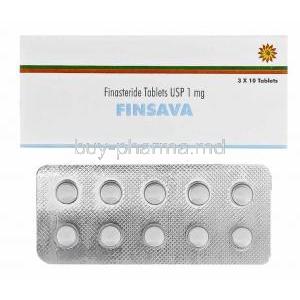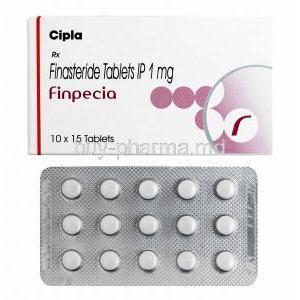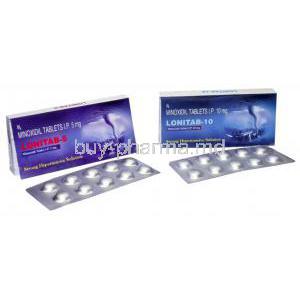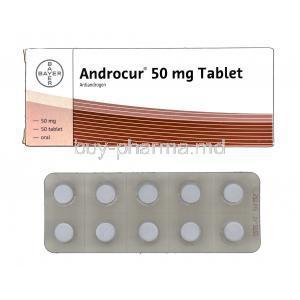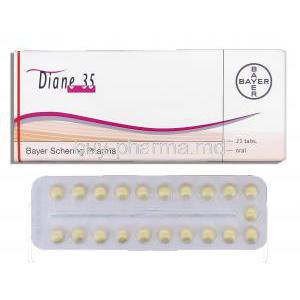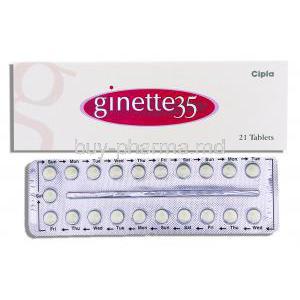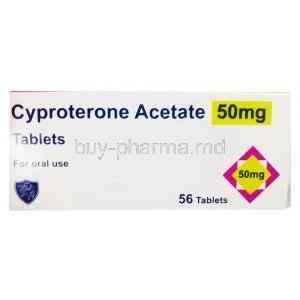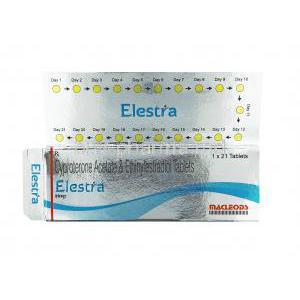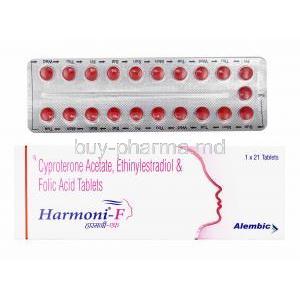Introduction to Fincar (Finasteride)
Overview of Fincar as a Generic Finasteride Medication
Fincar is a widely used generic formulation of finasteride, a synthetic 4-azasteroid. It is primarily prescribed for disorders linked to androgen activity, such as benign prostatic hyperplasia (BPH) and androgenetic alopecia. By attenuating the hormonal pathways that stimulate prostate growth and hair follicle miniaturization, Fincar provides clinical relief in multiple domains.
Historical Background and Development
The discovery of finasteride emerged from the recognition of the crucial role of dihydrotestosterone (DHT) in prostate and hair follicle physiology. Through targeted pharmacological research, finasteride was developed in the late 20th century as a pioneering oral 5-alpha reductase inhibitor. Its introduction transformed urology and dermatology practices, offering a non-surgical option for conditions previously managed only with invasive approaches.
FDA Approval and International Regulatory Status
Finasteride was first approved by the U.S. Food and Drug Administration in the 1990s. Initially indicated for BPH, it later gained approval for male pattern hair loss. Regulatory bodies across Europe, Asia, and Latin America have also sanctioned its use, with varying trade names and formulations. Today, Fincar stands as an affordable alternative to branded options, recognized globally for its clinical reliability.
Composition and Formulation
Active Ingredient: Finasteride
The pharmacologically active component of Fincar is finasteride, which selectively inhibits type II 5-alpha reductase, the enzyme responsible for converting testosterone into DHT.
Available Strengths and Dosage Forms
Fincar is predominantly available in tablet form, with a common strength of 5 mg. This dosage is particularly aligned with BPH treatment. Lower-dose versions (1 mg) are typically marketed under other trade names for alopecia.
Minoxidil and finasteride
Minoxidil and finasteride are the two primary medications used to treat hair loss, working through complementary mechanisms: finasteride blocks the hormone DHT that causes hair follicles to shrink, while minoxidil improves blood flow to the scalp to stimulate hair growth.
Dutasteride vs finasteride
Dutasteride is generally more effective for hair loss than finasteride because it inhibits all three types of the 5-alpha reductase (5AR) enzyme, leading to greater dihydrotestosterone (DHT) reduction. However, finasteride is FDA-approved for male pattern baldness, is more affordable, and may have a slightly lower risk of side effects. Dutasteride is considered a stronger alternative, sometimes used off-label when finasteride is insufficient, though its side effects, such as sexual issues, can be more frequent.
Finasteride vs tamsulosin
Both medications help with urinary symptoms of BPH, such as a weak urine stream. Finasteride works by reducing the size of the prostate, which relieves pressure on the urethra (the tube that empties the bladder). Tamsulosin works by relaxing muscles in the prostate and bladder, improving urine flow
Saw palmetto vs finasteride
Finasteride is a prescription medication proven more effective than saw palmetto for treating hair loss by significantly blocking the enzyme 5-alpha reductase and its associated DHT production. Saw palmetto is a botanical supplement that works by potentially inhibiting this same enzyme, though less potently, and may also have anti-inflammatory benefits. While saw palmetto offers a botanical option with fewer serious side effects, finasteride is the stronger choice for significant hair regrowth but comes with a higher risk of side effects like sexual dysfunction
Inactive Ingredients and Excipients
In addition to the active moiety, tablets contain excipients such as lactose monohydrate, cellulose derivatives, starch, and magnesium stearate. These compounds facilitate stability, bioavailability, and patient tolerability.
Mechanism of Action: How Fincar Works
Role of 5-Alpha Reductase Enzyme
The 5-alpha reductase enzyme catalyzes the transformation of testosterone into dihydrotestosterone. This potent androgen drives prostate tissue proliferation and contributes to follicular regression in the scalp.
Reduction of Dihydrotestosterone (DHT) Levels
By inhibiting the type II isoenzyme, finasteride markedly reduces serum and tissue DHT concentrations. This biochemical alteration diminishes androgenic stimulation where excessive growth or miniaturization occurs.
Impact on Prostate Tissue and Hair Follicles
- Shrinks enlarged prostate glands, improving urinary dynamics. - Stabilizes hair follicle cycling, prolonging the anagen (growth) phase. - Slows progression of androgen-related structural changes over time.
Topical vs oral finasteride
Topical finasteride offers a lower risk of systemic side effects, such as decreased libido, because it localizes the drug to the scalp, while oral finasteride provides more consistent and potentially stronger DHT suppression throughout the body.
Approved Medical Uses
Treatment of Benign Prostatic Hyperplasia (BPH)
Fincar provides measurable relief from obstructive urinary symptoms such as hesitancy, weak stream, and incomplete bladder emptying. By gradually reducing prostate volume, it improves flow rates and decreases the likelihood of acute urinary retention or surgical intervention.
Symptom Relief and Long-Term Management
Clinical trials have demonstrated significant reductions in prostate size after months of therapy. The drug not only mitigates discomfort but also enhances long-term outcomes by preventing disease progression.
Treatment of Male Pattern Hair Loss (Androgenetic Alopecia)
In dermatological practice, finasteride has become a cornerstone therapy for male pattern baldness. It fosters regrowth in the vertex and frontal scalp while halting further thinning in susceptible men.
Effectiveness and Timeline
Most individuals require at least 3 to 6 months of consistent use to notice tangible changes. Sustained administration is necessary to preserve results, as discontinuation often leads to recurrence of hair loss.
Off-Label Uses of Finasteride
Prostate Cancer Prevention
Research has examined the utility of finasteride in lowering prostate cancer incidence, though clinical consensus remains cautious due to potential associations with high-grade tumor detection.
Finasteride for Women
Under strict medical supervision, finasteride may be prescribed to women for excessive hair growth or androgenetic alopecia. Its teratogenic potential requires stringent contraceptive measures.
Adjunct in Transgender Hormone Therapy
Finasteride is sometimes incorporated into gender-affirming care to suppress androgenic features, particularly in transgender women seeking reduction of body and facial hair.
Experimental Applications
Investigational roles include potential modulation of acne severity, seborrheic dermatitis, and even certain neurosteroid-related disorders. These uses are not yet mainstream and remain under clinical study.
Finasteride Dosage and Administration
Standard Dosage for BPH
The typical dosage for benign prostatic hyperplasia is 5 mg once daily, taken with or without food. Consistency in timing aids in maintaining stable serum levels.
Standard Dosage for Male Pattern Baldness
For alopecia, the effective dose is generally 1 mg once daily. Higher doses do not necessarily accelerate results and may elevate risk of side effects.
Duration of Therapy and Maintenance
Both conditions require long-term treatment. Symptom relief in BPH may take six months or longer, while hair regrowth necessitates uninterrupted therapy for lasting benefit.
Adjustments for Special Populations
No significant dosage alterations are usually required for renal impairment. In hepatic insufficiency, caution and closer monitoring are advised due to hepatic metabolism of the drug.
Administration in Special Populations
Administration to Elderly Patients
Elderly individuals often tolerate finasteride well, though reduced hepatic clearance may necessitate careful observation. Monitoring of prostate-specific antigen (PSA) remains essential to avoid masking malignancy.
Administration to Pregnant Women and Nursing Mothers
Finasteride is contraindicated in pregnancy due to the risk of abnormal development of external genitalia in male fetuses. Women of childbearing potential should avoid handling crushed or broken tablets. Data on excretion into breast milk is limited, reinforcing the recommendation against use during lactation.
Administration to Children
Safety and efficacy in pediatric populations have not been established. Use in children is experimental and generally discouraged outside specialized clinical research settings.
Side Effects of Fincar
Topical Finasteride Side Effects
Fincar, like many pharmacological agents, may provoke certain adverse reactions. These are often mild and reversible with discontinuation. Finasteride sexual side effects:
- Decreased libido: A reduction in sexual desire, often transient, may occur during early stages of therapy.
- Finasteride Erectile dysfunction: Difficulty in achieving or sustaining an erection is a recognized effect, though prevalence remains modest.
- Reduced ejaculatory volume: Some patients notice diminished semen output, a consequence of altered androgenic balance.
Less Common but Serious Side Effects
Though less frequent, certain adverse effects necessitate immediate medical attention. These events underscore the importance of vigilance during prolonged administration.
- Finasteride gynecomastia: Gynecomastia and localized sensitivity may signal hormonal modulation.
- Depression and mood changes: Reports suggest a potential association with altered neurosteroid pathways, leading to mood instability or depressive episodes.
- Allergic reactions: Manifestations such as rash, urticaria, swelling of the lips or eyelids, and pruritus warrant discontinuation and medical evaluation.
- Finasteride weight gain: Finasteride increases the circulating levels of testosterone, which may signal more muscle growth.
Finasteride Side Effects Women
Finasteride dosages for females ranged from 1.25 mg to 5 mg per day in clinical studies. Finasteride side effects in women include headache, low libido, and irregular periods. It can also cause serious birth defects, so you shouldn't take finasteride if you're pregnant or trying to become pregnant.
Drug Interactions
Interaction with CYP3A4 Inhibitors and Inducers
Finasteride undergoes hepatic metabolism, and while CYP3A4 plays a partial role, potent inhibitors or inducers of this enzyme may theoretically alter plasma concentrations. Caution is advised with agents such as ketoconazole, rifampin, or carbamazepine.
Potential Interaction with Testosterone Therapy
Exogenous testosterone administration may antagonize the therapeutic benefit of Fincar by elevating substrate levels for conversion. This interplay requires careful clinical balancing.
Considerations with Other BPH Medications (Alpha-Blockers)
Combination regimens with alpha-adrenergic antagonists can enhance symptomatic relief in BPH. However, concurrent use should be individualized, as additive effects on blood pressure or urinary dynamics may occur.
Warnings and Contraindications
Absolute Contraindications
- Hypersensitivity: Any prior allergic reaction to finasteride or its excipients excludes future use.
- Use in pregnancy: Finasteride is contraindicated in women who are or may become pregnant due to teratogenic effects on male fetuses.
Warnings and Important Precautions
Several clinical caveats require emphasis when prescribing Fincar:
- Prostate cancer detection: By lowering PSA levels, finasteride may mask early detection of malignancies. Adjusted interpretation of PSA values is necessary.
- Routine monitoring: Regular PSA testing and prostate examinations are essential to ensure safety during long-term therapy.
- Sexual side effects: Patients should be counseled that changes in sexual function may persist in a minority even after discontinuation.
- finasteride erectile dysfunction recovery: Recovery from finasteride-induced erectile dysfunction (ED) can vary, but for most men, the side effects resolve naturally within a few months of stopping the medication because the drug has a short half-life and is quickly metabolized by the body.
Careful Administration
Special care is warranted in select populations:
- Liver impairment: As hepatic metabolism is the primary clearance pathway, patients with compromised liver function require close observation.
- History of psychiatric illness: Individuals with depression or mood disorders should be monitored for worsening symptoms.
Finasteride Alternative
Finasteride alternatives for hair loss include the prescription medication Dutasteride, over-the-counter options like Minoxidil, and non-pharmaceutical treatments such as microneedling, scalp massage, and hair growth serums. Natural options like saw palmetto and certain essential oils may offer support, while Low-Level Laser Therapy (LLLT) and Exosome treatments are also available.
Overdosage and Emergency Management
Reported Cases of Overdose
Documented overdoses of finasteride are rare, and most cases did not present with severe outcomes. Nonetheless, vigilance is advised.
Expected Clinical Manifestations
Large ingestions may not produce overt toxicity but could theoretically exacerbate hormonal imbalance, with potential reproductive or endocrine sequelae.
Supportive Treatment Protocols
No specific antidote exists. Management is supportive, focusing on symptomatic relief and monitoring of vital parameters. Gastric decontamination may be considered if ingestion is recent.
Handling and Storage Precautions
Safe Handling Instructions
Uncoated or crushed tablets should not be handled by women, particularly those who are pregnant or planning pregnancy. Skin absorption of the active ingredient may pose risks to fetal development.
Storage Conditions
Fincar should be stored at controlled room temperature, shielded from excessive heat, humidity, and direct light. Blister packs should remain intact until use to preserve stability.
Shelf-Life and Disposal Guidelines
Expired medication should be discarded responsibly, avoiding environmental contamination. Patients are encouraged to follow local pharmaceutical disposal programs.
Patient Counseling Information
Importance of Adherence to Long-Term Therapy
Consistency is paramount. Discontinuation often reverses therapeutic benefits within months, particularly in hair loss management.
Expected Time Before Therapeutic Benefit
Noticeable improvement in BPH symptoms or hair growth may require 3 to 6 months. Patients should be encouraged to maintain patience and adherence during this latency phase.
Guidance on Missed Doses
If a dose is forgotten, it should be taken as soon as remembered, unless the next scheduled dose is imminent. Doubling up to compensate for a missed tablet is discouraged.
Importance of Routine Medical Checkups
Long-term therapy mandates periodic review by healthcare professionals. Monitoring includes PSA evaluations, digital rectal examinations, and counseling on potential adverse effects.
Fincar, Finasteride FAQ
- What is Fincar Tablet used for?
- What is the active ingredient in Fincar?
- What does finasteride do?
- Why do men not take finasteride?
- What is the main side effect of finasteride?
- Is finasteride safe for kidneys?
- Can finasteride regrow hair?
- Is finasteride better than minoxidil?
- What is the best age to take finasteride?
- What happens if I stop finasteride?
- Is finasteride bad for sperm?
- Can finasteride affect vision?
- What organ does finasteride affect?
- Who cannot use finasteride?
- Is there a better option than finasteride?
- Will finasteride thicken hair?
- Can finasteride make you pee more?
- Does finasteride cause weight gain?
- Can finasteride make you emotional?
- When to stop finasteride?
- Can finasteride regrow the hairline?
- What are the serious side effects of finasteride?
- Can I take finasteride without a doctor?
- Does finasteride affect sperm?
- Is finasteride a steroid?
- What is a safer alternative to finasteride?
- Does finasteride make it hard to sleep?
- How long is it safe to take finasteride?
- Does finasteride regrow hair permanently?
- How much finasteride is enough for hair loss?
- Will finasteride make me less masculine?
What is Fincar Tablet used for?
Fincar Tablet is utilized in the management of benign prostatic hyperplasia. It aids in reducing the size of the enlarged prostate gland and alleviates symptoms such as difficulty urinating, a sudden urge to urinate, and the inability to retain urine.
What is the active ingredient in Fincar?
Finasteride
What does finasteride do?
It functions by preventing testosterone (a sex hormone) from converting into another hormone known as dihydrotestosterone (DHT). DHT can lead to an increase in the size of your prostate (benign prostate enlargement). It can also inhibit hair growth. Finasteride blocks the production of DHT, which aids in reducing the size of your prostate and minimizing hair loss.
Why do men not take finasteride?
- Sexual issues like erectile dysfunction
- Reduced libido
What is the main side effect of finasteride?
- Reduced libido and erectile dysfunction
- Depression
- Gynecomastia in men
- Orthostatic hypotension
Is finasteride safe for kidneys?
Finasteride may cause renal damage
Can finasteride regrow hair?
Yes
Is finasteride better than minoxidil?
Yes
What is the best age to take finasteride?
over the age of 18 years old
What happens if I stop finasteride?
Loss of hair
Is finasteride bad for sperm?
Some men using finasteride have reported test results indicating that they experienced poor sperm quality or infertility.
Can finasteride affect vision?
Finasteride has also been linked to ocular side effects, including blurred vision.
What organ does finasteride affect?
Prostate
Who cannot use finasteride?
Women and children
Is there a better option than finasteride?
Dutasteride promoted greater scalp hair growth in men with male pattern baldness compared to finasteride
Will finasteride thicken hair?
Yes
Can finasteride make you pee more?
Finasteride functions by inhibiting an enzyme that converts testosterone into DHT. This action helps shrink the prostate, making urination easier.
Does finasteride cause weight gain?
Yes
Can finasteride make you emotional?
Chronic finasteride treatment can lead to lasting depression, suicidal ideation, and cognitive decline
When to stop finasteride?
Stop finasteride 3 months prior to attempting conception
Can finasteride regrow the hairline?
Yes
What are the serious side effects of finasteride?
- Changes in the breasts including larger size, lumps, discomfort, or nipple discharge
- rash
- itching
- hives
- swelling of the lips and face
- difficulty breathing or swallowing
Can I take finasteride without a doctor?
Yes
Does finasteride affect sperm?
Yes
Is finasteride a steroid?
Yes
What is a safer alternative to finasteride?
Does finasteride make it hard to sleep?
No
How long is it safe to take finasteride?
Many months or even years
Does finasteride regrow hair permanently?
No
How much finasteride is enough for hair loss?
1mg, taken once a day
Will finasteride make me less masculine?
No

